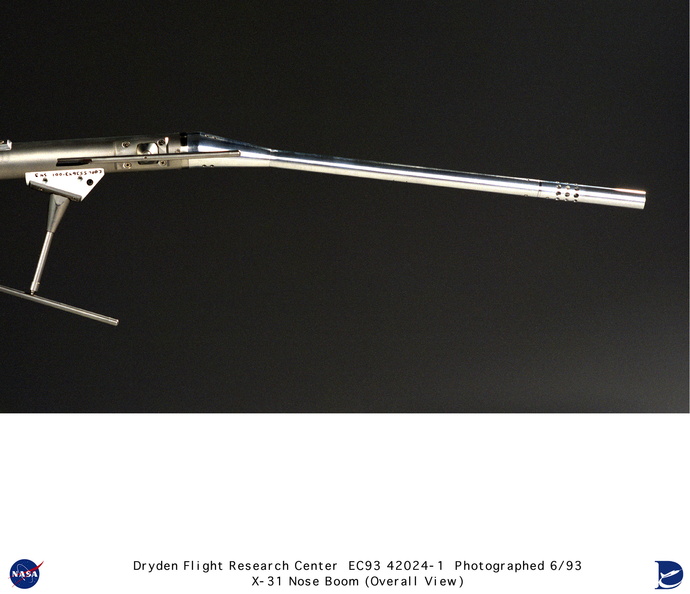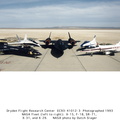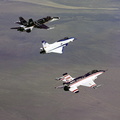
WIKIARCHIVES.SPACE
The Human Spaceflight Archive

Information
- Taken in
- Edwards Air Force Base
- Author
- NASA
- Description
- A photograph of the noseboom on the X-31 shows the Kiel air data probe angled at 10 degrees to better align the tip with the airflow at very high angles of attack. The devices were mounted on the nose of the X-31s to measure air pressure. Icing in the unheated Kiel probe on the first X-31 (Bu. No. 164584), caused that aircraft to crash on January 19, 1995. The aircraft obtained data that may apply to the design and development of highly-maneuverable aircraft of the future. Each had a three-axis thrust-vectoring system, coupled with advanced flight controls, to allow it to maneuver tightly at very high angles of attack.
- Created on
- Albums
- US SPACE PROGRAM / AERONAUTICS RESEARCH / X-31
- Source link
- https://www.dfrc.nasa.gov/Gallery/Photo/index.html
- Visits
- 7
- Rating score
- no rate
- Rate this photo
- License
- Public Domain
- Modified by WikiArchives
- No (original)
- Downloads
- 0
Powered by Piwigo
























